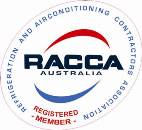AIRAH publication, HVAC&R Nation, have published an article detailing research into the HVAC&R industry’s skills gap.
The article emphasises the fact that the industry has constantly discussed a skills gap or shortage for at least a decade but despite this the gap has continued to widen.
The article focuses on several state-wide Department of Employment reports which specifically detail skill shortages in refrigeration and air conditioning (RAC) mechanics.
According to these Department of Employment reports, in Queensland, there is a state-wide shortage of refrigeration and air conditioning mechanics with 45 percent of all vacancies remaining unfilled four weeks after advertising. There was an average of 6.7 applicants per vacancy with just 4.2 applicants suitable for the position.
In NSW, there is a reported shortage with an average of five applicants per vacancy with just 0.7 applicants suitable for the position.
In Victoria, there is a reported shortage with an average of 8.1 applicants per vacancy with just 0.9 applicants suitable for the position. Victoria also reported that online and newspaper advertisements tended to attract low applicant numbers, with word-of-mouth advertising and networking proving to be more effective in finding applicants.
HVAC&R Nation’s article focused only on the statistics of Queensland, NSW and Victoria. The Department of Employment also completed reports on WA, the NT, SA, the ACT and Tasmania.
In WA there is no reported shortage with an average of 23.4 applicants per vacancy with an average of 9.2 applicants considered suitable by employers. Employers in WA also reported little difficulty in recruiting staff.
In the NT, there is a shortage with advertised vacancies attracting a low number of applicants, with 1.7 suitable applicants per vacancy, with only 50 percent of metropolitan vacancies being filled.
In SA, there is a reported shortage, however the report also states that most employers didn’t have recruitment difficulties when advertising vacancies, with 85 percent of vacancies filled within four weeks. There was also an average of 11.4 applicants per vacancy with 1.8 suitable applicants per vacancy.
In the ACT, there is no reported shortage, however the report also states that the market for RAC mechanics has tightened and employers experience significant difficulty filling their vacancies. While in Tasmania, there is also no reported shortage as employers found almost one suitable applicant per vacancy.
HVAC&R Nation’s article also contained an interview with Add Staff Recruitment, who specialise in recruitment for the HVAC&R industry. Add Staff Recruitment stated that they found recruitment difficulties with small to medium sized businesses, especially when it came to recruiting residential installation and service technicians. Add Staff Recruitment also approached Energy Skills Queensland (ESQ) about their recruitment trouble, which lead to ESQ establishing an Industry Consultation Forum to investigate the skills gap further.
To reap benefits and outcomes from the Industry Consultation Forum, ESQ distributed a survey for industry stakeholders to complete. The survey showed a knowledge and training gap in the use of natural refrigerant and fault-finding skills, as well as a strong consensus for national licensing.
HVAC&R Nation’s article concluded with emphasising the need for constant industry forums involving leaders and training partners to solve the skills gap both now and into the future.
HVAC&R Nation’s article can be read in full here.
Image via Pixabay.




